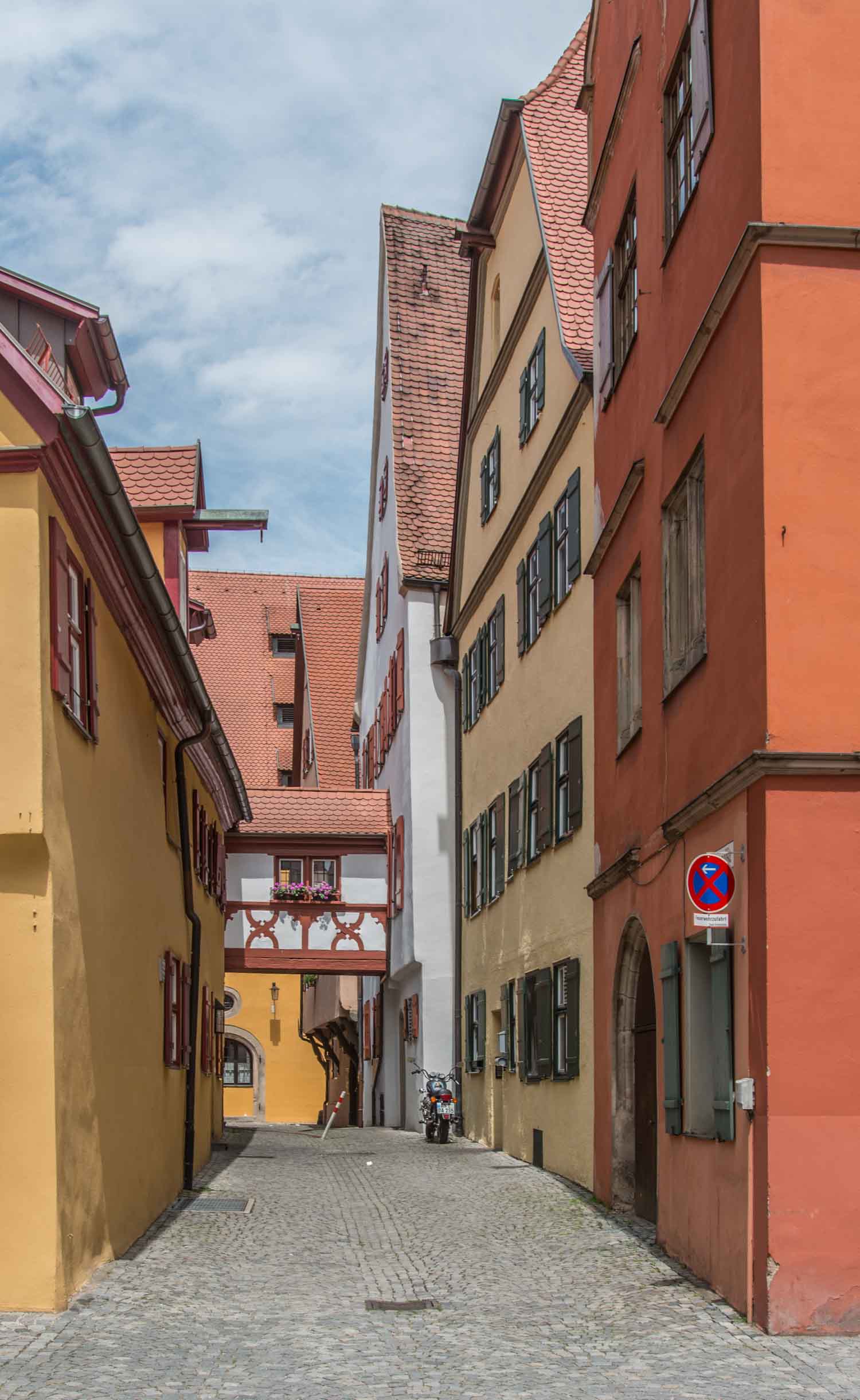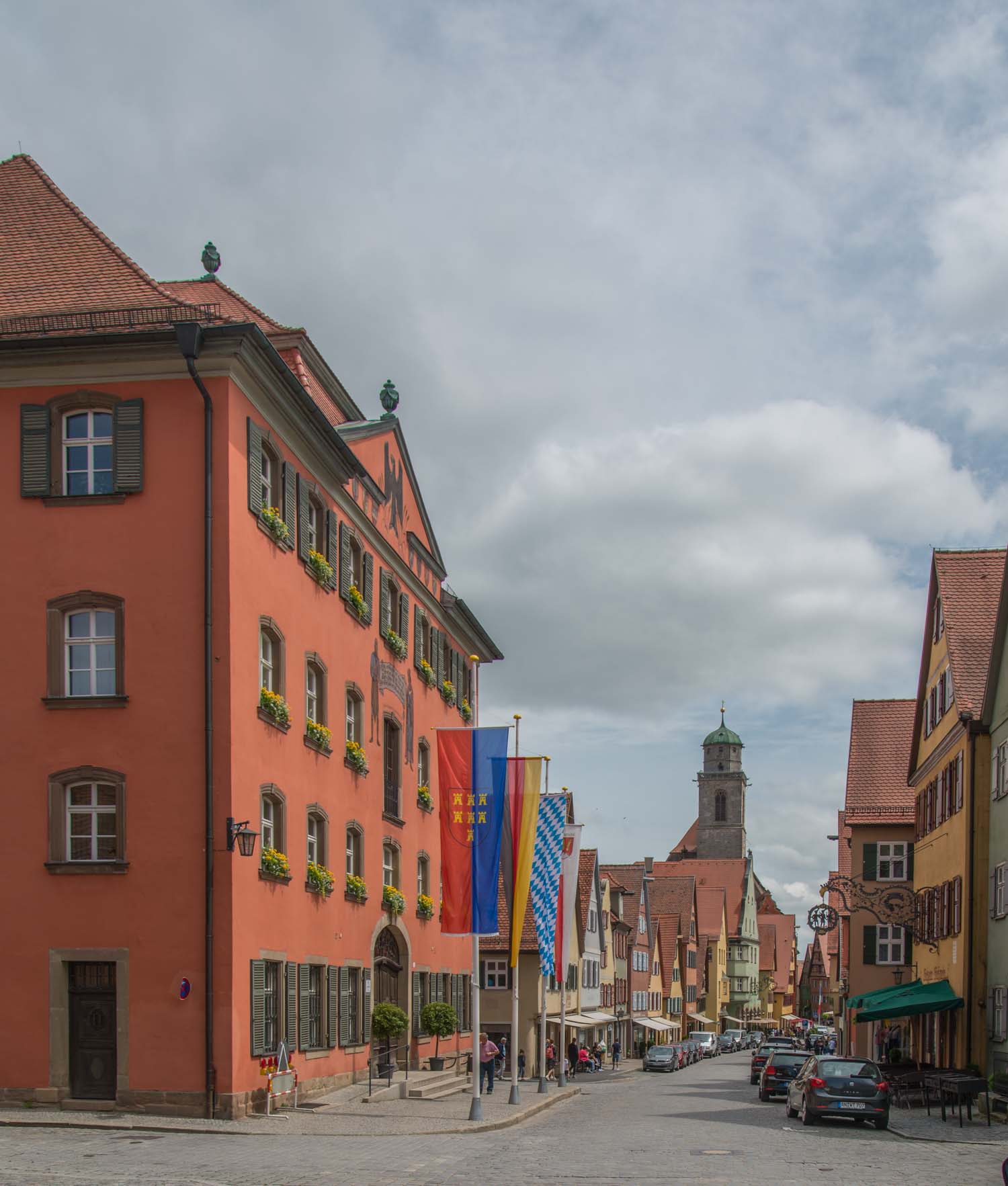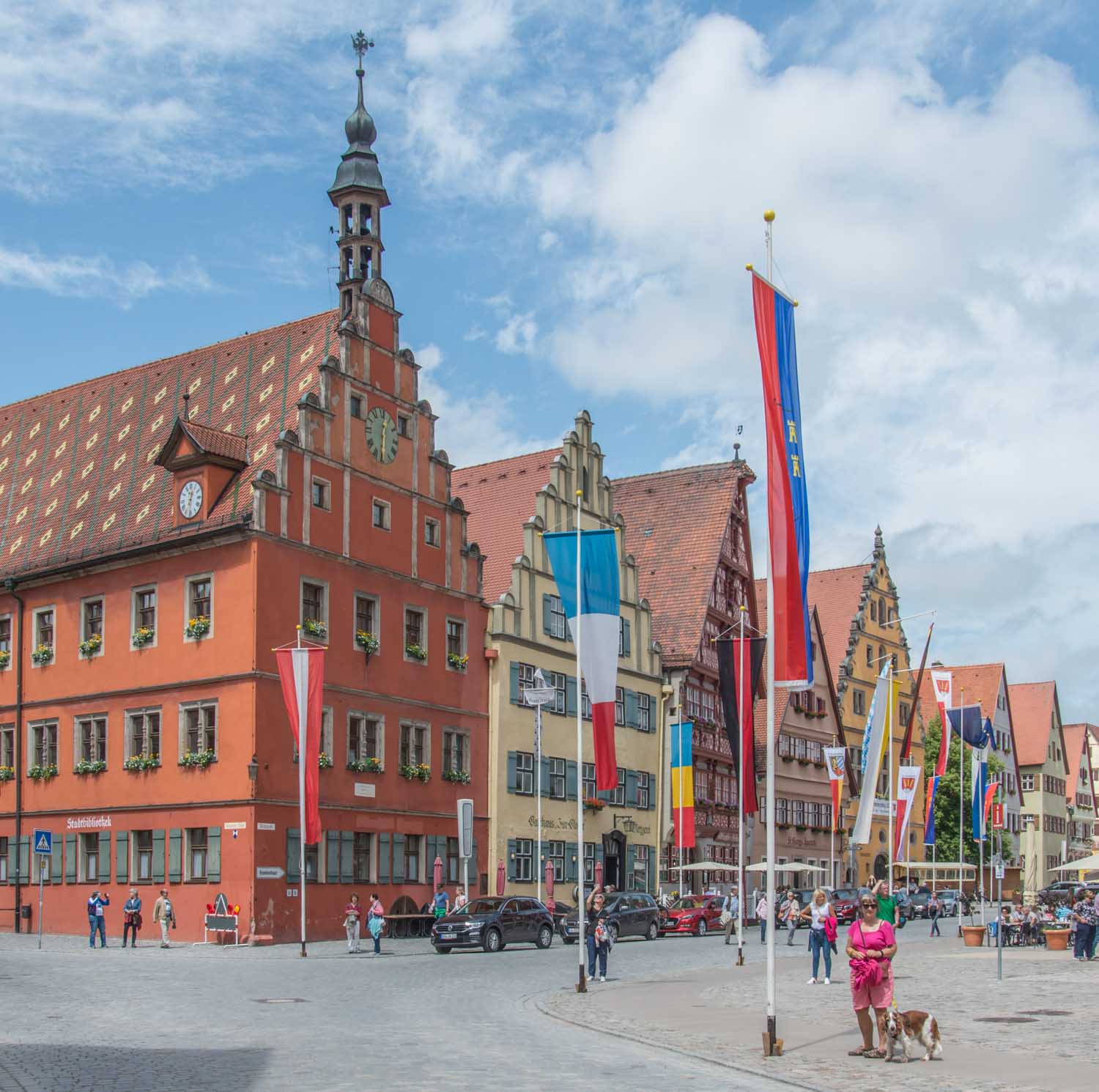Last night we nipped over the road from our Stellplatz to a restaurant with a huge garden. Unfortunately by dinner time there was rain in the air, so I asked a waiter if he could re-erect one of the huge umbrellas I had seen open during the day so we could eat with the dogs outside. After 15 minutes of confusion, while we waited outside for the waiter to appear, it became clear that there was a small language barrier and he hadn’t understood what we were asking.
Eventually we clarified that he thought we were bringing the dogs into the restaurant as he told us that this is acceptable everywhere in Germany! I don’t know whether this is literally true, but even if mostly true it would make eating out in Germany, for dogs owners, the best place in Europe.
I wanted to try another German classic and went for some excellent Bratwurst with superb potato salad and even Sarah got in un the act with essentially a macaroni cheese, with the macaroni substituted by the famous local “spätlze”, which is a bit like pasta but not quite!
Today we were caught out by bank holidays. As we travel around Europe we realise how badly served we are by our government and its paucity of bank holidays. Today it is Whitsun in Germany and, as we found out, all large enterprises are closed, including LIDL! Sarah looked up the total list of German bank holidays and there are more than 20! Admittedly some of these were regional only.
Short of bread and milk we arrived at the lovely large Stellplatz for the town of Dinkelsbühl (49.063814, 10.326895 €6 plus extra for water and electricity). It’s next to a main road, so many not be the quietest place to sleep but it has the advantage of being a mere short shuffle to the town walls.
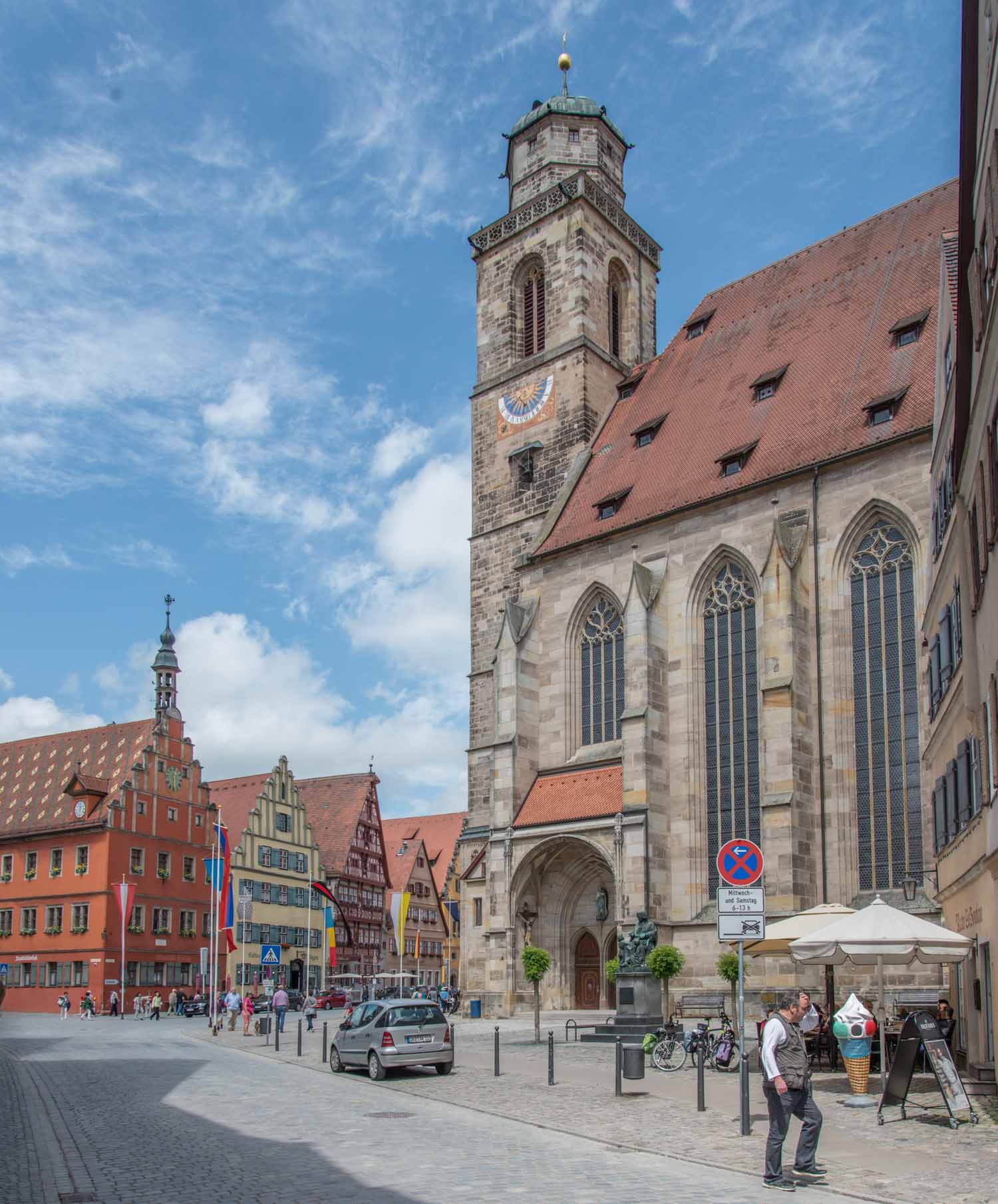
Dinkelsbühl, like Nördlingen yesterday, was a Free Imperial City in the messy conglomeration of small territories that made up the Holy Roman Empire (essentially Germany in the middle ages). This title meant that it was self governing and did not owe allegiance to a Prince or Prince Bishop and most of the other territories did.
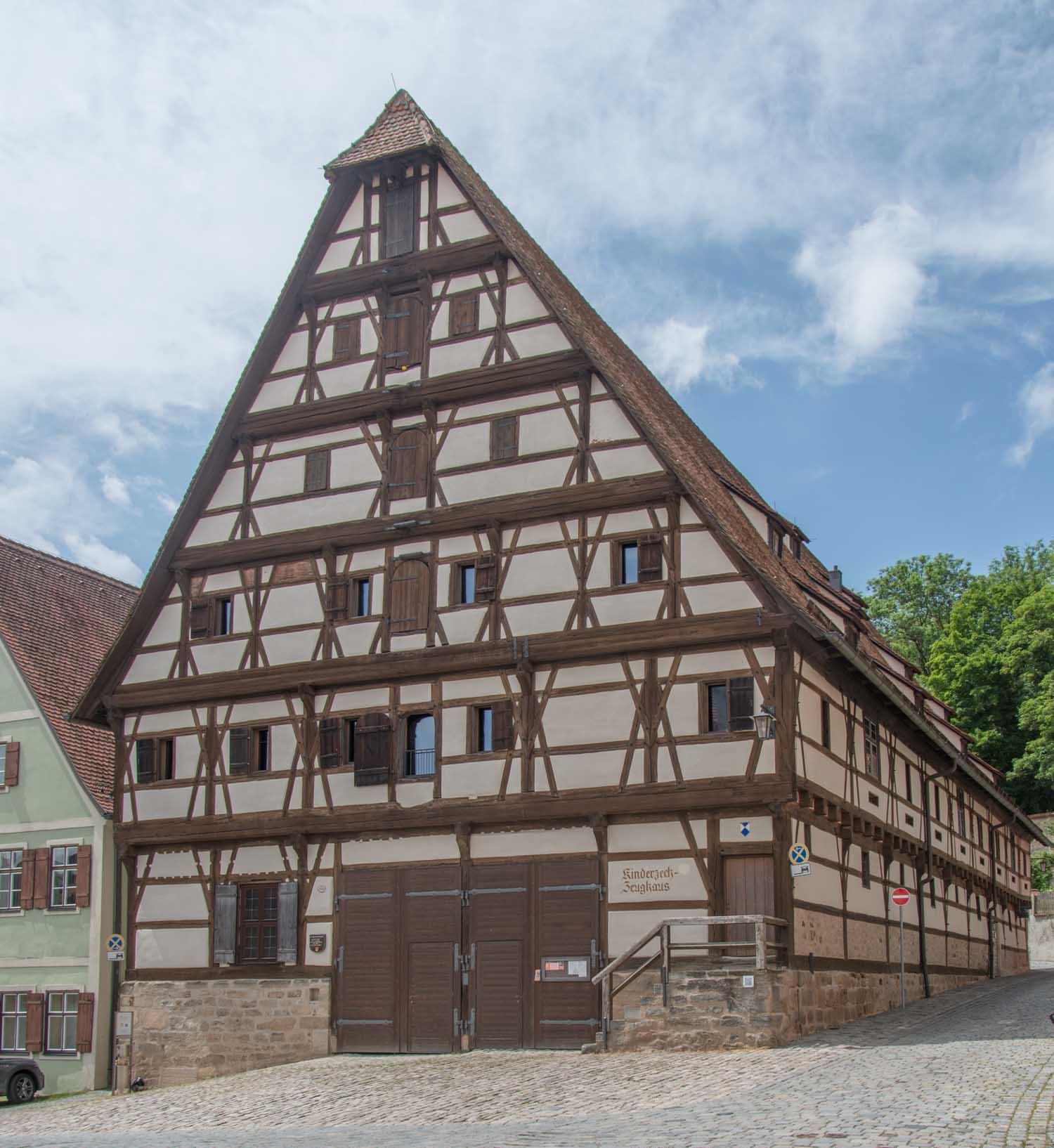
It was lucky in the 30 years war which followed the Reformation to escape much damage despite being captured by each side on more than one occasion. Being a small and industrially unimportant town, it sustained very little damage in the Second World War. The result is yet another perfectly preserved medieval city surrounded by a complete set of walls.
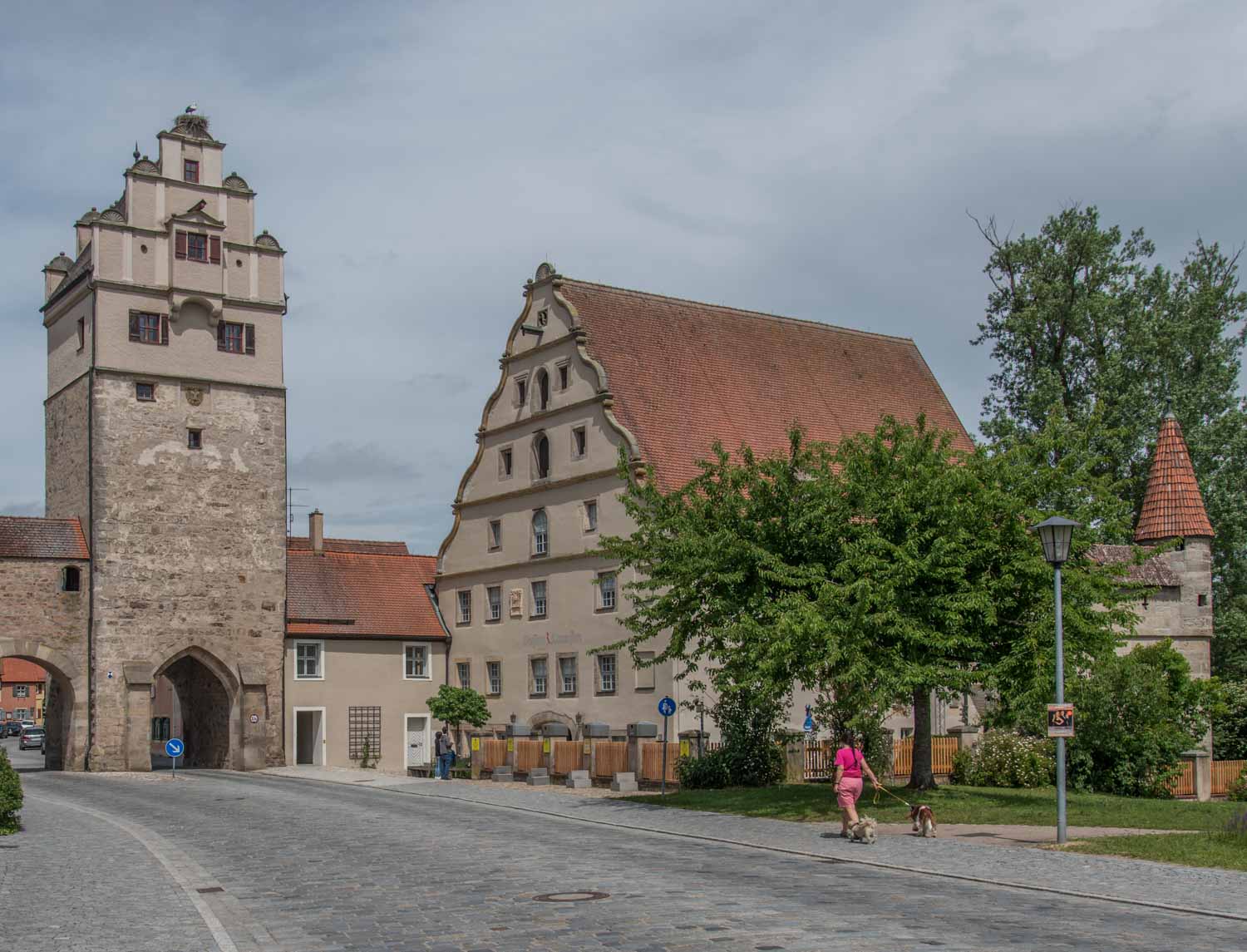
Sarah and I followed the same pattern as yesterday, which was to find the Tourist Information first and then follow the suggested route around the town. Dinkelsbühl is only a small town, with a population of about 11,000 and so the tour was shorter than yesterday’s and Sarah was able to complete it.
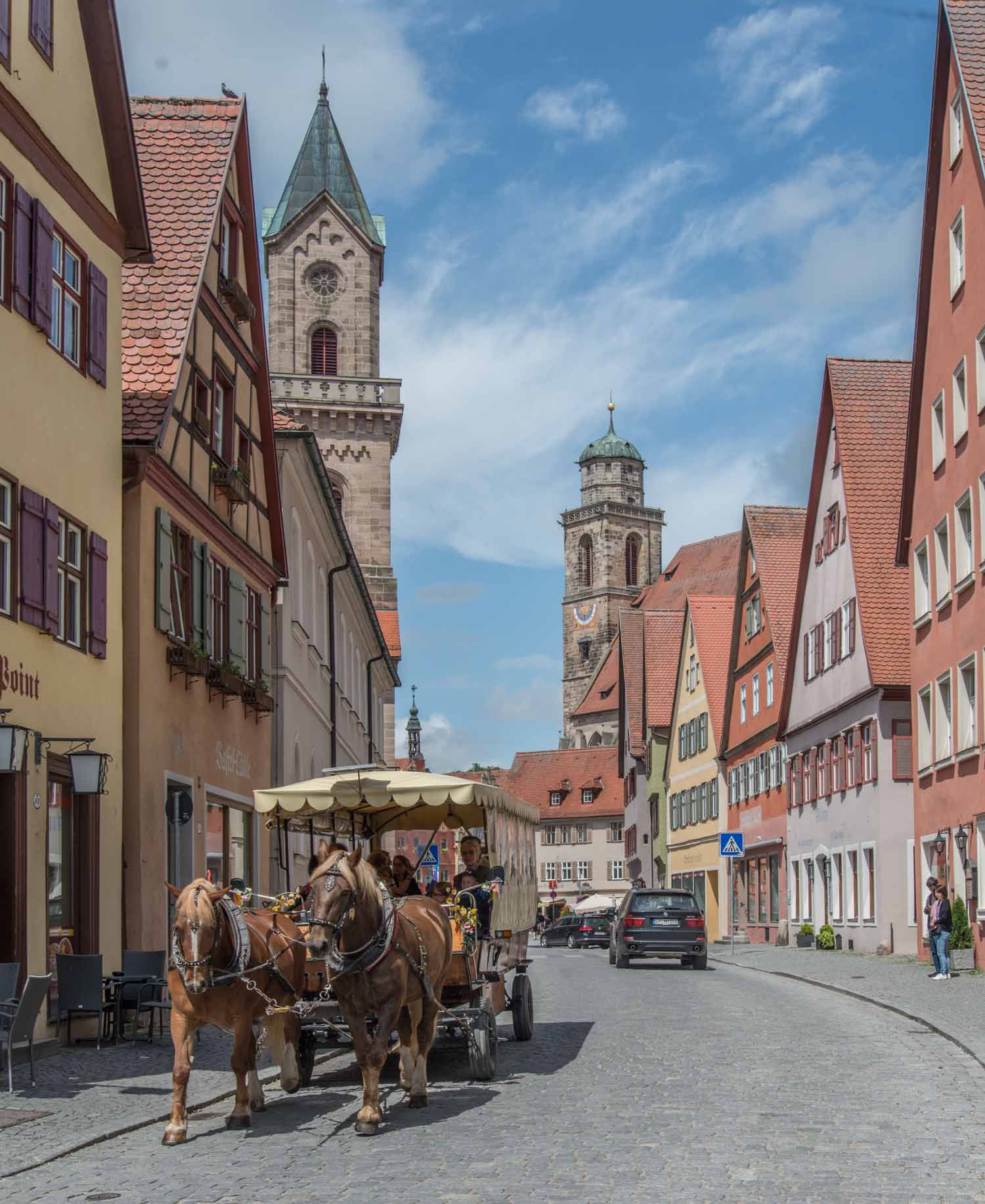
Dinkelsbühl is another impossibly pretty town, with every street made up of brightly coloured buildings, mostly dating from the 14thto the 16thcenturies. If the cars were removed from the streets it would be perfect, but then it would change from a still living town into some kind of museum. It is another must see town for anybody in this part of Germany.
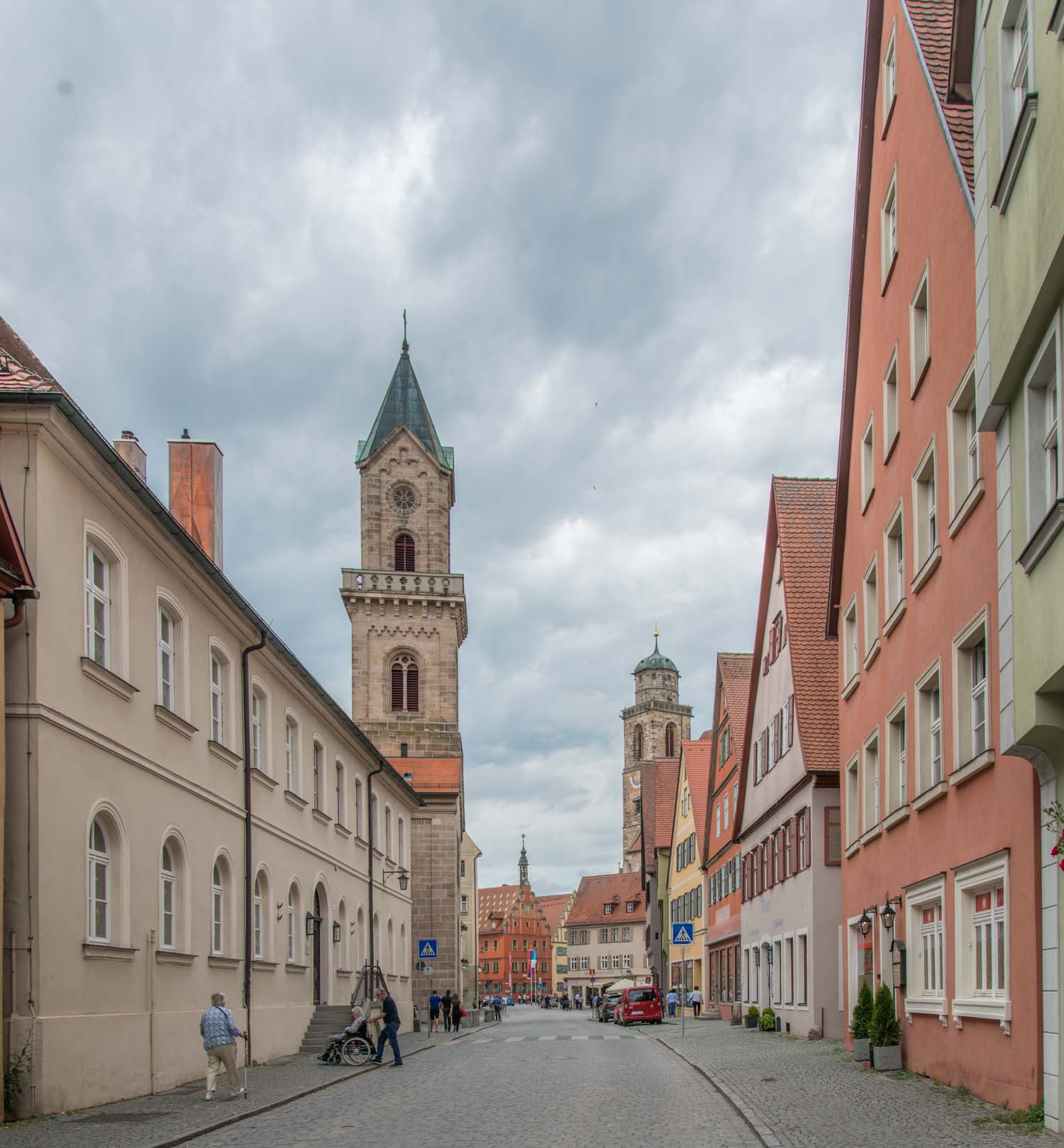
Tomorrow we travel another short distance along the Romantic Road to Rothenburg ob der Tauber, another medieval town, but in the case of this town with a slightly darker side to its essential Germanness.
